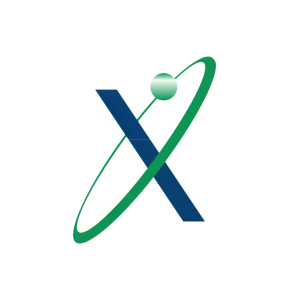Welcome to our dedicated page for Exagen SEC filings (Ticker: XGN), a comprehensive resource for investors and traders seeking official regulatory documents including 10-K annual reports, 10-Q quarterly earnings, 8-K material events, and insider trading forms.
Reimbursement tables, lupus test volumes, and biomarker R&D costs in Exagen’s SEC reports can feel like a maze. If you’ve ever hunted for a single Medicare rate change buried in the company’s 10-K, you know the challenge. Stock Titan’s AI turns hundreds of pages into concise insights, so you can spot revenue drivers and risk factors in minutes—not hours.
Whether you need the latest Exagen quarterly earnings report 10-Q filing or want to track Exagen insider trading Form 4 transactions, our platform delivers every document the moment it hits EDGAR. One click opens an AI summary that flags shifts in payer mix, liquidity updates, and pipeline milestones. Prefer the raw text? It’s there too—annotated, searchable, and linked to prior disclosures for fast trend analysis.
- Real-time alerts on Exagen Form 4 insider transactions so you never miss executive stock moves
- Exagen annual report 10-K simplified with plain-English explanations of complex diagnostic revenue recognition
- Instant breakdowns of every 8-K—yes, Exagen 8-K material events explained section by section
- AI answers to common questions like “How do I read the Exagen proxy statement executive compensation tables?”
Need deeper context? Use “understanding Exagen SEC documents with AI” mode to compare current filings to historical data and peer benchmarks. For traders, our dashboards visualize Exagen executive stock transactions Form 4 against clinical-study announcements. Fundamental analysts can export red-lined changes, supporting a thorough Exagen earnings report filing analysis ahead of calls.
From the first lab billings footnote to the latest shelf-registration, every disclosure is covered, explained, and searchable. No more digging through PDFs—just actionable clarity on the factors that move XGN.
Exagen Inc. reported Q3 2025 results showing stronger top-line performance and a larger loss. Revenue was $17.2 million, up from $12.5 million a year ago, with gross profit of $10.1 million. Operating loss narrowed to $3.1 million, but higher interest and a non-cash change in warrant liability drove a net loss of $7.1 million (vs. $5.0 million).
Cash and cash equivalents rose to $35.7 million as of September 30, 2025, supported by financing. The company completed a $18.6 million public offering in May and sold $3.4 million via its ATM. It also closed a $25.0 million initial draw under a new senior secured term loan with Perceptive, using $19.7 million to repay its 2017 loan; the facility permits draws up to $75.0 million subject to milestones. A warrant liability of $6.6 million was recorded, with a $2.7 million non-cash loss in the quarter.
Total assets were $62.8 million, liabilities $44.7 million, and stockholders’ equity $18.1 million. Shares outstanding were 22,663,099 as of October 31, 2025. A supplier agreement amendment adds minimum purchases aggregating $24.0 million through 2029. A previously disclosed qui tam matter was dismissed with prejudice on July 15, 2025.
Exagen Inc. (XGN) disclosed an insider transaction by its President and CEO, who is also a Director. On 10/16/2025, he sold 31,787 shares of common stock at $11.8161 per share, coded “S.”
According to the footnote, the sale was a mandated “sell to cover” to satisfy tax withholding on the vesting and settlement of Restricted Stock Units, and it was not a discretionary transaction by the reporting person.
Following the transaction, the reporting person beneficially owned 714,427 shares directly, plus 40,401 shares indirectly held by spouse.
Jeffrey G. Black, Chief Financial Officer of Exagen Inc. (XGN), sold 20,466 shares of common stock on 09/02/2025 at a price of $9.79 per share to satisfy tax withholding obligations arising from the vesting and settlement of restricted stock units (RSUs). The Form 4 shows the transaction was a mandatory "sell-to-cover" required by the issuer and not a discretionary sale by the reporting person. After the sale, the reporting person beneficially owned 269,026 shares, held directly. The filing is signed by the reporting person on 09/04/2025.
Exagen Inc. reporting person Laurence W. Lytton discloses beneficial ownership of 216,840 shares of common stock, representing 1.0% of the outstanding class. The filing states Mr. Lytton has sole voting and sole dispositive power over these shares, with no shared authority reported.
The statement affirms the shares are not held to influence control of the issuer and the reporting person certifies the accuracy of the disclosure. The filing indicates the position is not part of any group and no other parties are identified as holding power over the securities.
RTW Investments, LP and Roderick Wong, M.D. filed Amendment No. 5 to a Schedule 13G reporting ownership in Exagen Inc. (Common Stock, CUSIP 30068X103). The Reporting Persons disclose beneficial ownership of 1,696,866 shares, representing 7.7% of the class based on 21,998,739 shares outstanding as of June 30, 2025, per the issuer's quarterly report filed July 29, 2025. The filing shows shared voting and shared dispositive power over these shares and no sole voting or dispositive power. The RTW Funds have the right to receive dividends or proceeds. The statement is signed on 08/14/2025 and is filed as a passive Schedule 13G amendment.
Exagen Inc. (XGN) 10-Q highlights for Q2 2025:
- Revenue: $17.2 M, up 14% YoY; six-month revenue $32.7 M (+11%). AVISE CTD accounted for 91% of sales.
- Profitability: Gross margin held at ~60% ($10.4 M). Operating loss was $2.6 M (flat YoY) but net loss widened to $4.4 M (-49 ¢ YoY) due to higher interest ($1.1 M) and a $0.4 M warrant fair-value loss. EPS was -$0.21 vs -$0.16.
- Cash flow & liquidity: Operating cash burn was $13.6 M. Cash & equivalents rose to $30.0 M (from $22.0 M at 12/24) after a $18.6 M May equity offering and a $25.0 M Tranche A draw under a new $75 M Perceptive Credit term loan. Minimum unrestricted-cash covenant is $3 M.
- Balance sheet: Total assets $58.8 M; shareholders’ equity improved to $21.0 M (was $9.5 M). Borrowings $22.3 M long-term and $0.7 M current; effective interest rate on Perceptive loan 16.2%.
- Warrants: 400 k warrants (exercise $5.27) issued; liability marked at $4.0 M. Up to 750 k more may vest with future draws.
- Customer & supplier risk: Customer A 23% of revenue; top three suppliers provided 92% of test consumables.
- Legal: DOJ qui tam case dismissed with prejudice in July 2025.
- Outlook: Management believes current cash funds operations ≥12 months but may seek additional capital to support growth and R&D pipeline.
Exagen Inc. (Nasdaq: XGN) filed a Form 8-K dated July 29, 2025. The filing is limited to the disclosure that, on the same date, the company released its unaudited financial results for the three- and six-month periods ended June 30, 2025.
Item 2.02 – Results of Operations and Financial Condition: The related earnings press release is furnished as Exhibit 99.1. Because the information is furnished—not filed—it is expressly excluded from Section 18 liability and is not automatically incorporated by reference into other SEC filings.
Item 9.01 – Exhibits: 99.1 (Press Release dated July 29, 2025) and 104 (Cover Page iXBRL).
No additional material events, financial metrics, or strategic updates are included in this report.
Exagen Inc. (Nasdaq: XGN) has filed a Form S-3 shelf registration statement to cover the potential resale of up to 1,150,000 shares of common stock that may be issued upon exercise of a warrant granted to Perceptive Credit Holdings IV, LP. The warrant was issued as part of a senior secured delayed-draw term loan facility signed on 25 April 2025.
Key equity details
- Shares registered: 1,150,000, representing future dilution of roughly 6.3 % of the 18.3 million shares outstanding (FY-2024 10-K).
- Current market value (based on the 18 June 2025 close of $7.36): ≈ $8.5 million.
- Vesting schedule: 400 k shares vested at closing; 150 k each vest on Tranche B & C borrowings; 450 k vest on Tranche D.
- Proceeds: Company receives no proceeds from stockholder resales; it will receive cash only if the warrant is exercised for cash.
Debt financing structure
- Total commitment: $75 million senior secured term loan (the “Perceptive Term Loan Facility”).
- Draws: $25 m funded (Tranche A); additional Tranches B ($10 m), C ($10 m) and D ($30 m) available through Mar-2027, subject to revenue and business-development milestones.
- Interest: greater of Term SOFR or 4.75 % plus 7 % margin (effective floor rate 11.75 %).
- Maturity: 25 April 2030; interest-only during the term with principal due at maturity.
The filing grants Perceptive registration rights, allowing it to sell shares from time to time via multiple distribution methods. While Exagen strengthens liquidity through the credit facility, investors should weigh potential dilution and elevated leverage at a double-digit interest rate. The company will also bear all registration expenses, and secondary selling could pressure the share price.
Strategic context
Exagen’s core business focuses on its AVISE® rheumatology diagnostics platform. Management seeks non-dilutive capital to fund growth, yet the warrant structure nonetheless introduces share issuance risk. The extended six-year draw window and five-year interest-only period provide operating flexibility but lock the company into a high-cost debt instrument until 2030.


